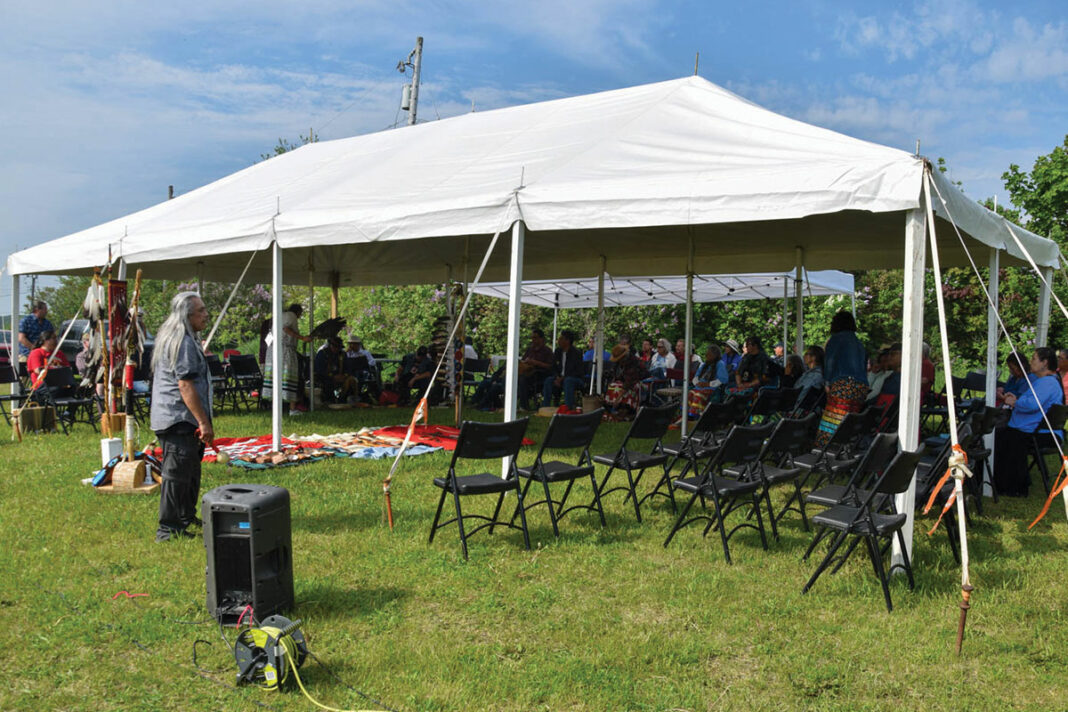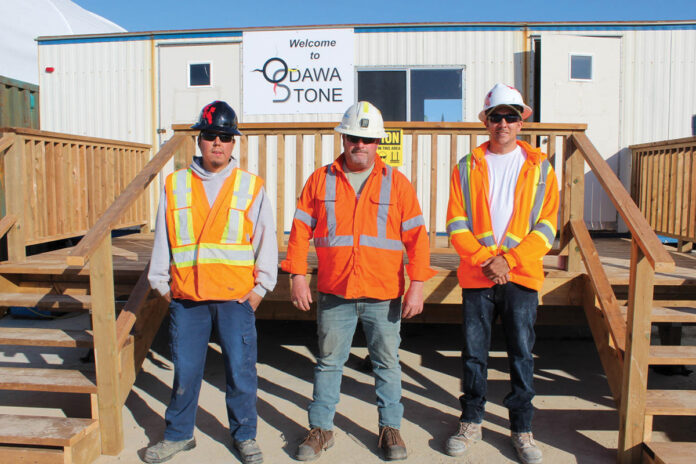MANITOWANING—A Gathering of Pipes and Pipe Carriers Manitoulin Treaty Gathering was hosted by the Ojibwe Cultural Foundation (OCF) on the original site of the 1836 Treaty at Manitowaning, the site of the signing of that treaty overlooking Manitowaning Bay, on Wednesday, May 22 and Thursday, May 23.
In addition to various pipes carried by leadership today, Grandmother pipes, treaty pipes and medicine pipes, the historic Bond Head Treaty Pipe were among the five historic pipes hosted, courtesy of the Royal Ontario Museum. The 1836 Bond Head Treaty pipe was saved from a public auction, thanks to the diligence of former Wiikwemkoong Ogimaa Duke Peltier. Plans are that the five historic pipes will eventually be held at the OCF museum at M’Chigeeng.
During the two-day event, a series of academic talks and presentations took place.
“The Manitoulin Island Treaty Gathering: A Gathering of Pipes and Pipe Carriers was a great success this year,” noted an OCF statement. “The Gathering was held in Manitowaning at the treaty signing grounds on May 22 – 23, 2024, with evening events that started on Tuesday, May 21. This week, we saw beautiful weather throughout the event, the sharing of teachings and stories from Pipe Carriers, Leadership and the Grandmothers. We wish to thank all of those who attended and a special acknowledgment to the planning committee and event partners for another successful Gathering. Miigwetch/thank You!”
A sacred fire was held throughout the two-day event.
A Tuesday evening talk ‘Manitoulin: Heartland of the Odawa’ was presented by Trent University historian Dr. William ‘Bill’ Fox. Wednesday’s talk ‘As long as the sun should appear in the sky-the Bodewadmig Forced Migration’ was presented by Award-winning Barrie Ontario-based multi-media Fine Artist and Historian Clayton Samual King.

Dr. Fox took participants in the public talk through the history of the region, noting that migration to the Island’s environs took place some 10,000 years ago during the retreat of the last ice age—before Manitoulin was even an island and the great Algonquin Lake covered much of the land.
He noted that there were at least two cultural groups occupying the region during those earlier occupations, travelling from the west and the prairies, all the way to the eastern coast.
Much of Dr. Fox’s presentation served as a refutation of suggestions that the Anishinaabek had abandoned the area and only returned in recent centuries. Given the clear historical evidence, “To say that you just got here is just ridiculous,” said Dr. Fox.
The second portion of Dr. Fox’s presentation focused on the international trade that was taking place in the region 2,000 years ago. Among his photos were implements made from pure copper. Over 5,720 pounds were dug from a pit at the Minong mine.
During archeological reviews on one beach, there were so many tools and artifacts, both utilitarian and ritual, that one of Dr. Fox’s colleagues gazed across the sand to remark “this is just like Canadian Tire.”
Dr. Fox’s presentation lays out the case for occupation of the region by Indigenous peoples for over 10 centuries with a convincing academic foundation. Although the Odawa were forced to retreat from the area in 1650, they continued to create trade materials and traded across the continent, eventually making their way back into their traditional territories.
Much of Dr. Fox’s presentation followed the trade routes of the region through the materials used in many of the artifacts in the archeological record.





